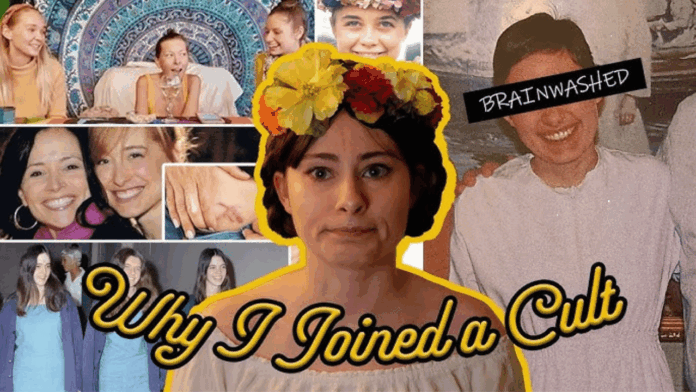A powerful new video titled Why I Joined a Cult: The Psychology of Cult Recruitment, uploaded by first-time YouTuber Kafryn D, has gone viral across social media, racking up over 248,000 views within weeks of its debut. The video offers a raw, firsthand account of cult recruitment tactics, emotional manipulation, and the difficult path toward personal recovery.
Kafryn’s story has struck a nerve—particularly among viewers searching for answers to questions like “Am I in a cult?” or “How do cults recruit people?” The video has gained traction on Reddit, particularly in communities such as r/BreadTube and r/CultPodcasts, where discussions around religious trauma and psychological coercion are common.
“Nobody joins a cult. They join a good thing, and then they realize they were f*cked.”
A Personal Journey Into Cult Indoctrination
The video opens with an unflinching confession: “When I was 18, I joined a cult.” Kafryn describes being emotionally fragile, housed in a residential treatment facility and facing deep uncertainty about her future. It was during this vulnerable time that she was approached by seemingly well-meaning religious recruiters offering love, community, and certainty.
Initial encounters were warm and affirming. Kafryn explains how love bombing—a tactic involving overwhelming praise, gift-giving, and affection—played a critical role in making her feel valued and special. “Words of affirmation make brain go burr,” she notes dryly. What began as community outreach soon escalated into a system of control.
Once embedded in the group, Kafryn began to experience a systematic breakdown of her autonomy. Using what cult researchers refer to as thought reform or coercive persuasion, the group slowly imposed new belief systems, behavioral codes, and information restrictions. She references the BITE Model (Behavior, Information, Thought, and Emotional control) to describe how the cult exerted dominance over every part of her identity.
Signs You May Be in a Cult
Kafryn draws upon the work of cult expert Rick Alan Ross, highlighting 10 common warning signs of cultic behavior:
- Absolute authority of leaders
- Financial secrecy
- Moral absolutism
- Group-centered hyperactivity
- Censorship and isolation
- No personal boundaries
- Fear-based control
- Toxic perfectionism
- Suppression of self-esteem
- Verified abuse reported by former members
These red flags often go unnoticed by members, especially those in emotional distress or craving community. As Kafryn explains, “I didn’t have an identity of my own… so when a new identity prescribed by a literal rulebook came my way, it was welcomed.”
Why Cults Work: The Psychology Behind Recruitment
One of the video’s strongest contributions is its accessible explanation of why people join cults. Kafryn describes how cults don’t advertise themselves as such. Instead, they appear as benevolent spiritual groups, wellness movements, or personal development communities. The key to their success lies in their ability to offer simple answers to complex problems, often delivered by charismatic and empathetic recruiters.
She also explores social and evolutionary psychology, noting that humans are biologically wired for bonding, eye contact, and oxytocin-fueled trust. Cult leaders, she says, are skilled at exploiting these tendencies to exert emotional dominance.
Other psychological tools cited in the video include:
- Information control: suppressing dissent and external criticism.
- Social mirroring: teaching members to copy group behavior and jargon.
- Black-and-white thinking: enforcing a strict “in vs. out” worldview.
- Toxic positivity: reframing doubts as weakness.
“Being moody or critical was seen as a test from God,” Kafryn says. “This is called emotional contagion.”
The Breaking Point and Aftermath
Kafryn’s turning point came unexpectedly when she typed the word “cult” into Google. “With that one Google search, my entire world crash-landed and burst into flames,” she recounts. The search led her to articles that matched her experience point for point, triggering a panic that catalyzed her exit.
Despite attempts by the group to draw her back in, she severed ties and reconnected with pre-cult friends. Her family’s nonjudgmental support also played a key role in helping her reestablish autonomy.
Yet the road to recovery wasn’t smooth. Kafryn candidly discusses her mental health struggles, including another hospitalization. “It wasn’t leaving the church that caused it,” she clarifies, “but part of a longer struggle I was already in.”
A Cautionary Tale for Viewers
One of the most sobering parts of the video is Kafryn’s admission that she never thought to research the group until it was too late. “It didn’t occur to me to research it. I know that’s not a good excuse,” she says. Her fear of losing something she believed was saving her life kept her trapped longer than she might have been otherwise.
She now sees her experience as a cautionary tale. “I still believe in the goodness of humanity… maybe,” she muses. “I don’t want to say it made my experience worth it… but I do hope it helps someone.”
The video’s growing popularity suggests that it already has.
Raising Awareness About Cult Abuse
As public conversations about religious trauma, spiritual abuse, and cultic dynamics gain traction, content like Why I Joined a Cult offers a valuable window into the psychology of cult victimization and recovery. For those asking themselves “How do I know if I’m in a cult?”, Kafryn’s story may provide both clarity and comfort.
In an age where online platforms can serve as both recruitment tools and recovery resources, her video serves as a reminder: critical thinking and access to information are our best defense.

